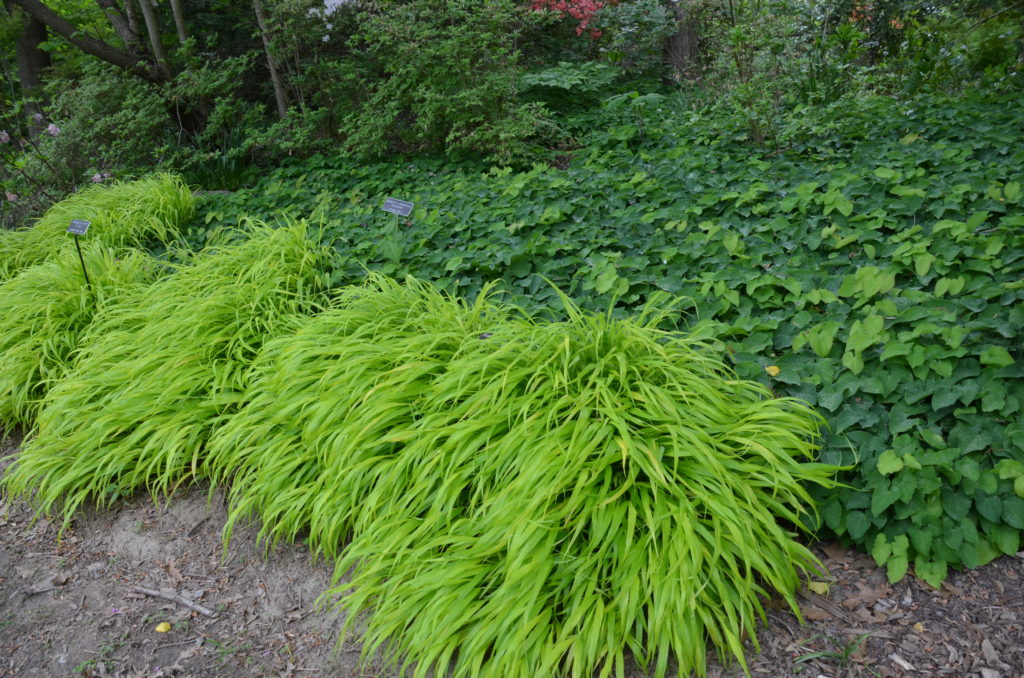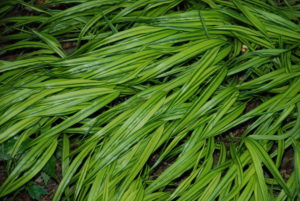Japanese Forest grasses, also called Hakone grasses (Hakonechloa macra), hail from Japan (USDA hardiness Zones 5-9). They are a wonderful choice in a drab woodland garden spot. You will love them for their bright foliage and low growing habit.
Hakone grass grows in a mounding clump. The foliage cascades over rocks, edges over garden walls, or off the rims of containers. It spreads slowly via rhizomes into a luscious ground cover.
The species itself (H. macra) has its green foliage, tolerates a bit more sun and drier soils, and is much faster growing compared to the brightly tinted cultivars. Four selections, including the species are highlighted here.
‘Aureola’ – this green and gold streaked cultivar was selected the Perennial Plant of the Year in 2009. Leaf coloring is more prominent in deep shade and less so in sunnier spots.
‘All Gold’ – foliage is chartreuse or all gold as its name implies, a wonderful accent plant associated with other colored foliage plants grown in containers or garden beds.
‘Fubuki’ forms a low mound of narrow green and creamy white striped 14 inches tall and 18 inches wide sedge; leaves develop pink tones in autumn; grows very compact than related cultivars.
‘Beni-kaze’ (Red Wind) produces short wide green blades which turn partially red in summer and most leaves take on a red to purple tint in fall.
Plant hakone grasses from spring thru mid-summer to allow adequate time for the plant’s root system to develop before the arrival of winter. Hakone grasses prefer a partial sunny to partial shade location and humus-rich, moist, well-drained, slightly acidic soils. In northern locales full morning sunlight or full day dappled sites are perfect. The grass tolerates almost full shade in the hot, humid deep South.
Feed lightly in spring with granular 20-10-10 or equivalent fertilizer or water soluble fertilizer 2-3 times in spring and summer months. Clip back (or mow off) last year’s clumps a few inches from ground in late winter.



 Posted in
Posted in 
